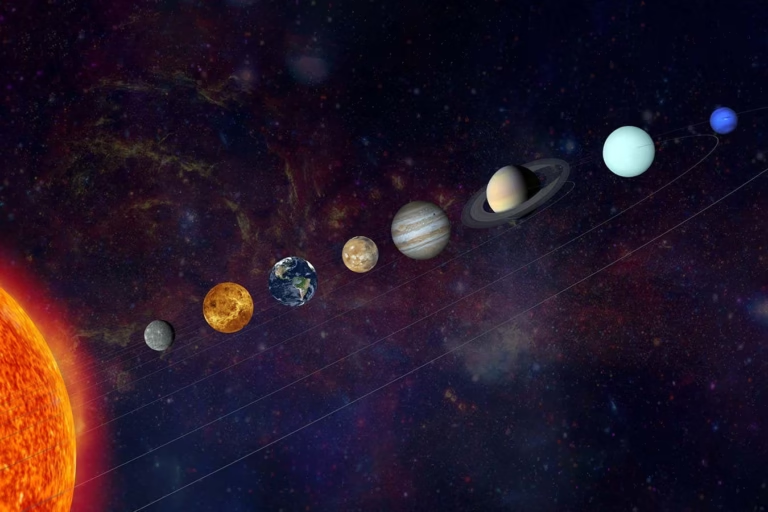
Towards the end of February, all the planets will be visible side by side in the sky
Alcupin/Getty Images
All the planets in our solar system line up to parade across the night sky at once. This unusual celestial event will see seven visible planets dotting the sky in a condition known as a great planetary alignment.
The eight planets in our solar system orbit the sun in roughly the same plane because they originally formed from the same disk of debris around the sun. The line that the sun crosses the daytime sky, called the ecliptic, coincides with this plane, so when the planets appear in the sky, they all appear roughly along the ecliptic. The planet’s orbit is slightly tilted, so it’s not a perfect straight line for the planet, but it’s pretty close.
Nowhere is this more evident than during a planetary alignment. The alignment, which includes all planets except Mercury, will take place in mid-January. Uranus and Neptune are the most distant planets and can only be seen with a telescope, but other planets may be spotted with the naked eye.
The spectacular alignment involving Mercury will only occur for a few nights around February 28th, depending on your location. All seven planets will be visible for a short time just after sunset, arcing across the sky.
By the time the sky is completely dark, Mercury and Saturn will be below the horizon, followed closely by Neptune and Venus. The best time to spot planets is the hour after sunset, when all planets except Mars, Jupiter, and Uranus are close to the horizon. These three will be hanging around for most of the night, but finding three planets in the sky isn’t as rare as finding all seven.
Aside from weather, the main factor that prevents us from seeing such alignments consistently is the difference in the orbital periods of the planets. Mercury, the closest planet to the Sun, takes about 88 Earth days to orbit, while Neptune, the farthest planet, takes nearly 165 Earth years.
A good alignment is only possible if all the planets are relatively far from the Sun, visible even at night, and all planets are in approximately the same half of the sky and can be seen at the same time. It’s an amazing orbital coincidence, where there can be multiple spectacular alignments in a year, and sometimes years can go by without a single alignment.
In a sense, the planetary alignment is just an optical illusion. The planets are still millions or even billions of kilometers away. And if you were to look down on our solar system from outside the solar system, you would never see them lined up in perfect lines. What emanates from the sun. But for stargazers around the world, it’s a great chance to see all the planets neatly lined up in the sky at once.
topic:

